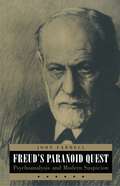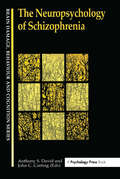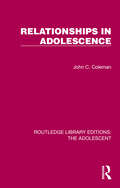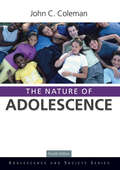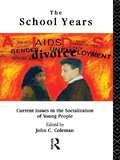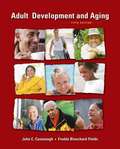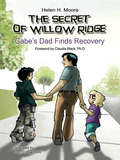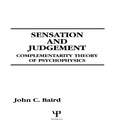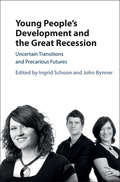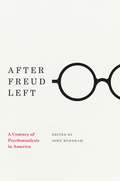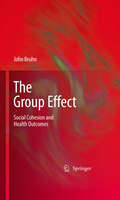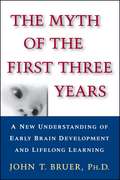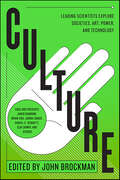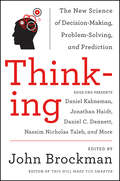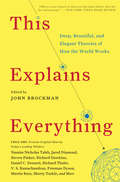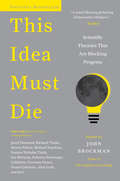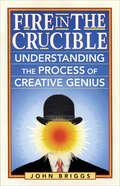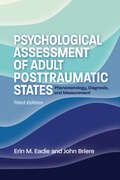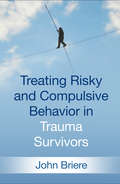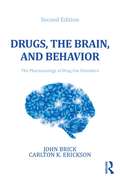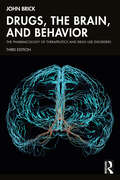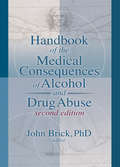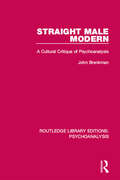- Table View
- List View
Freud's Paranoid Quest: Psychoanalysis and Modern Suspicion
by John C. FarrellFreud's Paranoid Quest is an exceptionally broad-ranging and well-written book....Whether or not one agrees with certain of his arguments and assessments, one must acknowledge the remarkable intelligence that is displayed on nearly every page.--Louis Sassauthor of Madness and Modernism and The Paradoxes of Delusion John Farrell's Freud's Paranoid Quest is the most trenchant, exhilarating and illuminating book I have encountered in many years. [The book] should be pondered not just by all students of Freud's thought but by everyone who senses that 'advanced modernity' has by now outstayed its welcome.--Frederick CrewsUniversity of California, Berkeley In Freud's Paranoid Quest, John Farrell analyzes the personality and thought of Sigmund Freud in order to give insight into modernity's paranoid character and into the true nature of Freudian psychoanalysis. John Farrell's Freud is not the path-breaking psychologist he claimed to be, but the fashioner and prisoner of a total system of suspicion. The most gifted of paranoids, Freud deployed this system as a self-heroizing myth and a compelling historical ideology.
The Neuropsychology Of Schizophrenia (Brain, Behaviour and Cognition)
by Anthony S. David John C. CuttingSchizophrenia is being increasingly viewed as a neurological disorder. The Neuropsychology of Schizophrenia addresses the key questions in modern schizophrenia research. How do abnormalities of the brain produce the characteristic signs and symptoms of this most severe and mysterious mental malady? Where are these abnormalities? How do they develop? How can we detect them? What clinical and cognitive effects do they have? This new book is the first of its kind to tackle these questions in a systematic way from a number of allied perspectives: from phenomenology to physiology, animal behaviour to metacognition and from PET scans to paper and pencil tests. A number of authors from the United Kingdom and the United States have made contributions; all are acknowledged experts in the field. The chapters each contain a concise review of the particular topic, empirical data and also a theoretical overview. The Neuropsychology of Schizophrenia will be required reading for all serious students of schizophrenia from both medical and psychology backgrounds.
Relationships in Adolescence (Routledge Library Editions: The Adolescent)
by John C. ColemanBased on the study of a large number of young people ranging in age from eleven to seventeen, Relationships in Adolescence, originally published in 1974, proposes a new model of adolescent development, described as the ‘focal’ model, which makes a valuable contribution to the greater understanding of adolescence for all who have contact with this age group. The book contains an examination of three different approaches to adolescence, an outline of the research project, and a discussion of the empirical evidence concerning identity and self-image, heterosexual and parental relationships, and large group situations. Comparisons are made between age levels and between boys and girls with respect to the whole range of relationships, and the evidence illustrates significant and at times dramatic differences between groups. Of particular importance are some of the changes which occur with age, such as the degree of conflict with parents and attitudes to sexuality. Based on Dr Coleman’s findings is his fresh ‘focal’ model of adolescent development. This model stresses the elements of growth and change in adolescence, with special emphasis on the normal anxieties and conflicts that occur at different stages of the developmental period. Today it can be read and enjoyed in its historical context.
The Nature of Adolescence (Adolescence and Society)
by John C. ColemanThe fourth edition of this successful textbook provides an up-to-date introduction to all of the key features of adolescent development. While drawing on the North American literature on adolescence, it highlights European perspectives and also provides unique coverage of the topic by summarising and reviewing what is known about adolescence from a British viewpoint. Comprehensively updated and rewritten, this edition includes material on new topics such as: The development of the adolescent brain Sleep patterns in adolescence Parenting programmes for parents of teenagers Health, including sport and exercise, nutrition and obesity, and mental health Education and schooling Young people’s use of digital technologies New approaches to resilience and coping. The book places a particular emphasis on a positive view of adolescence, and the author develops a new theoretical perspective which looks at how young people themselves construct and shape their own developmental pathways. Interview material taken from discussions with adolescents is included throughout the book, and there are sample essay questions and PowerPoint lecture slides available online. This is an essential text for anyone studying human development at undergraduate and postgraduate level, as well as on postgraduate courses for professionals including teachers, social workers, health workers, counsellors, and youth workers.
The School Years: Current Issues In The Socialization Of Young People (Psychology In Progress Ser.)
by John C. ColemanThe School Years provides a challenging and lively collection of essays on key issues affecting young people in the school setting. It is an essential book for all those concerned with adolescence and education. Since the first edition in 1979, major social changes such as unemployment, AIDS, issues of race and gender, and increasing divorce rates have had a direct impact on education and young people. With these dramatice changes in mind, the contributors take an entirely new and up-to-date approach to current controversial issues such as the relationship of home and school, gender roles, morality, delinquency, and peer groups. Contributors include: John Coleman, Trust for the Study of Adolescence; T. Honess, School of Psychology, University of Wales; Peter Kutnick, Department of Education, University of Sussex; Sally Archer, Trenton State College, USA; Philida Salmon, Institute of Education, University of London; Maurice Chazan; David P. Farrington, Institute of Criminology, Cambridge.
Adult Development and Aging (fifth edition)
by John C. Cavanaugh Fredda Blanchard-FieldsHaving a solid grounding in research and theory about Adult Development and Aging is essential even for understanding the evening news.
The Secret of Willow Ridge
by Claudia Black Helen H. Moore John C. BlackfordLikeable Gabe makes the journey from being an almost friendless, unhappy, and skeptical young boy reeling from mistreatment at the hands of his addicted father and the effects the disease of addiction have had on his family, to a hopeful, happy youngster who takes pride in his dad's greatest accomplishment: recovery.
Sensation and Judgment: Complementarity Theory of Psychophysics (Scientific Psychology Series)
by John C. BairdPsychophysical theory exists in two distinct forms -- one ascribes the explanation of phenomena and empirical laws to sensory processes. Context effects arising through the use of particular methods are an unwanted nuisance whose influence must be eliminated so that one isolates the "true" sensory scale. The other considers psychophysics only in terms of cognitive variables such as the judgment strategies induced by instructions and response biases. Sensory factors play a minor role in cognitive approaches. This work admits the validity of both forms of theory by arguing that the same empirical phenomena should be conceptualized in two alternative, apparently contradictory, ways. This acceptance of opposites is necessary because some empirical phenomena are best explained in terms of sensory processes, while others are best ascribed to central causes. The complementarity theory stresses the "mutually completing" nature of two distinct models. The first assigns importance to populations of sensory neurons acting in the aggregate and is formulated to deal with sensory effects. The second assigns importance to judgment uncertainty and to the subject strategies induced by experimental procedures. This model is formulated to explain context effects. Throughout the text, the exposition is interlaced with mathematics, graphs, and computer simulations designed to reveal the complementary nature of psychophysical explanations.
Young People’s Development and the Great Recession: Uncertain Transitions and Precarious Futures
by Ingrid Schoon John BynnerThe 2007–8 financial crisis and subsequent 'Great Recession' particularly affected young people trying to make their way from education into the labour market at a time of economic uncertainty and upheaval. This is the first volume to examine the impact of the Great Recession on the developmental stage of young adulthood, a critical phase of the life course that has great significance in the foundations of adult identity. Using evidence from longitudinal data sets spanning three major OECD countries, these essays examine the recession's effects on education and employment outcomes and consider the wider psycho-social consequences, including living arrangements, family relations, political engagement, and health and well-being. While the recession intensified the impact of pre-existing trends towards a prolonged dependence on parents and, for many, the precaritisation of life chances, the findings also point to manifestations of resilience, where young people countered adversity by forging positive expectations of the future. Recasts the concept of youth transitions within a contemporary life course perspective, taking into account micro and macro influences Provides a more holistic understanding of recession effects, and offers pointers where new policy regarding, for example, education and training is urgently needed; Draws on data collected for a number of large-scale, national representative and longitudinal data sets; Illustrates the role of social policy in buffering the effects of the recession, and how these vary across countries.
After Freud Left: A Century of Psychoanalysis in America
by John BurnhamFrom August 29 to September 21, 1909, Sigmund Freud visited the United States, where he gave five lectures at Clark University in Worcester, Massachusetts. This volume brings together a stunning gallery of leading historians of psychoanalysis and of American culture to consider the broad history of psychoanalysis in America and to reflect on what has happened to Freud’s legacy in the United States in the century since his visit There has been a flood of recent scholarship on Freud’s life and on the European and world history of psychoanalysis, but historians have produced relatively little on the proliferation of psychoanalytic thinking in the United States, where Freud’s work had monumental intellectual and social impact. The essays in After Freud Left provide readers with insights and perspectives to help them understand the uniqueness of Americans’ psychoanalytic thinking, as well as the forms in which the legacy of Freud remains active in the United States in the twenty-first century. After Freud Left will be essential reading for anyone interested in twentieth-century American history, general intellectual and cultural history, and psychology and psychiatry.
The Group Effect
by John BruhnSociologists and anthropologists have had a long interest in studying the ways in which cultures shaped different patterns of health, disease, and mortality. Social scientists have documented low rates of chronic disease and disability in non-Western societies and have suggested that social stability, cultural homogeneity and social cohesion may play a part in explaining these low rates. On the other hand, in studies of Western societies, social scientists have found that disease and mortality assume different patterns among various ethnic, cultural and social-economic groups. The role of stress, social change and a low degree of cohesion have been suggested, along with other factors as contributing to the variable rates among different social groups. Social cohesion has been implicated in the cause and recovery from both physical and psychological illnesses. Although there has been a large amount of work established the beneficial effects of cohesion on health and well-being, relatively little work has focused on HOW increased social cohesion sustains or improves health. This work is based on the premise that there are risk factors, including social cohesion that regulate health and disease in groups. One of the challenges is how to measure social cohesion - it can be readily observed and experienced but difficult to quantify. A better understanding of how social cohesion works will be valuable to improving group-level interventions.
The Myth of the First Three Years
by John BruerMost parents today have accepted the message that the first three years of a baby's life determine whether or not the child will grow into a successful, thinking person. But is this powerful warning true? Do all the doors shut if baby's brain doesn't get just the right amount of stimulation during the first three years of life? Have discoveries from the new brain science really proved that parents are wholly responsible for their child's intellectual successes and failures alike? Are parents losing the "brain wars"? No, argues national expert John Bruer. In The Myth of the First Three Years he offers parents new hope by debunking our most popular beliefs about the all-or-nothing effects of early experience on a child's brain and development. Challenging the prevailing myth -- heralded by the national media, Head Start, and the White House -- that the most crucial brain development occurs between birth and age three, Bruer explains why relying on the zero to three standard threatens a child's mental and emotional well-being far more than missing a few sessions of toddler gymnastics. Too many parents, educators, and government funding agencies, he says, see these years as our main opportunity to shape a child's future. Bruer agrees that valid scientific studies do support the existence of critical periods in brain development, but he painstakingly shows that these same brain studies prove that learning and cognitive development occur throughout childhood and, indeed, one's entire life. Making hard science comprehensible for all readers, Bruer marshals the neurological and psychological evidence to show that children and adults have been hardwired for lifelong learning. Parents have been sold a bill of goods that is highly destructive because it overemphasizes infant and toddler nurturing to the detriment of long-term parental and educational responsibilities. The Myth of the First Three Years is a bold and controversial book because it urges parents and decision-makers alike to consider and debate for themselves the evidence for lifelong learning opportunities. But more than anything, this book spreads a message of hope: while there are no quick fixes, conscientious parents and committed educators can make a difference in every child's life, from infancy through childhood, and beyond.
Culture: Leading Scientists Explore Civilizations, Art, Networks, Reputation, and the Online Revolution (Best of Edge Series)
by John Brockman"Theway Brockman interlaces essays about research on the frontiers of science withones on artistic vision, education, psychology and economics is sure to buzzany brain." —Chicago Sun-Times, on This Will Change EverythingLaunchinga hard-hitting new series from Edge.org and Harper Perennial, editor JohnBrockman delivers this cutting-edge master class covering everything you needto know about Culture. With original contributions by the world’sleading thinkers and scientists, including Jared Diamond, Daniel C. Dennett,Brian Eno, Jaron Lanier,Nicholas Christakis, and others, Culture offers a mind-expanding primeron a fundamental topic. Unparalleled in scope, depth, insight and quality, Edge.org’s Culture is not to be missed.
Thinking
by John BrockmanUnlock your mindFrom the bestselling authors of Thinking, Fast and Slow; The Black Swan; and Stumbling on Happiness comes a cutting-edge exploration of the mysteries of rational thought, decision-making, intuition, morality, willpower, problem-solving, prediction, forecasting, unconscious behavior, and beyond. Edited by John Brockman, publisher of Edge. org ("The world's smartest website"--The Guardian), Thinking presents original ideas by today's leading psychologists, neuroscientists, and philosophers who are radically expanding our understanding of human thought. Daniel Kahneman on the power (and pitfalls) of human intuition and "unconscious" thinking - Daniel Gilbert on desire, prediction, and why getting what we want doesn't always make us happy - Nassim Nicholas Taleb on the limitations of statistics in guiding decision-making - Vilayanur Ramachandran on the scientific underpinnings of human nature - Simon Baron-Cohen on the startling effects of testosterone on the brain - Daniel C. Dennett on decoding the architecture of the "normal" human mind - Sarah-Jayne Blakemore on mental disorders and the crucial developmental phase of adolescence - Jonathan Haidt, Sam Harris, and Roy Baumeister on the science of morality, ethics, and the emerging synthesis of evolutionary and biological thinking - Gerd Gigerenzer on rationality and what informs our choices
This Explains Everything: 150 Deep, Beautiful, and Elegant Theories of How the World Works (Edge Question Series)
by John BrockmanDrawn from the cutting-edge frontiers of science, This Explains Everything will revolutionize your understanding of the world.What is your favorite deep, elegant, or beautiful explanation? This is the question John Brockman, publisher of Edge.org ("The world's smartest website"--The Guardian), posed to the world's most influential minds. Flowing from the horizons of physics, economics, psychology, neuroscience, and more, This Explains Everything presents 150 of the most surprising and brilliant theories of the way of our minds, societies, and universe work.Jared Diamond on biological electricity * Nassim Nicholas Taleb on positive stress * Steven Pinker on the deep genetic roots of human conflict * Richard Dawkins on pattern recognition * Nobel Prize-winning physicist Frank Wilczek on simplicity * Lisa Randall on the Higgs mechanism * BRIAN Eno on the limits of intuition * Richard Thaler on the power of commitment * V. S. Ramachandran on the "neural code" of consciousness * Nobel Prize winner ERIC KANDEL on the power of psychotherapy * Mihaly Csikszentmihalyi on "Lord Acton's Dictum" * Lawrence M. Krauss on the unification of electricity and magnetism * plus contributions by Martin J. Rees * Kevin Kelly * Clay Shirky * Daniel C. Dennett * Sherry Turkle * Philip Zimbardo * Lee Smolin * Rebecca Newberger Goldstein * Seth Lloyd * Stewart Brand * George Dyson * Matt Ridley
This Idea Must Die: Scientific Theories That Are Blocking Progress (Edge Question Series)
by John BrockmanReporting from the cutting edge of scientific discovery, today's visionary thinkers target the greatest roadblocks to innovation.Few truly new ideas are developed without first abandoning old ones. In the past, discoveries often had to wait for the rise of the next generation to see questions in a new light and let go of old truisms. Today, in a world that is defined by a rapid rate of change, staying on the cutting edge has as much to do with shedding outdated notions as adopting new ones. In this spirit, John Brockman, publisher of the online salon Edge.org ("the world's smartest website"--The Guardian), asked 175 of the world's most influential scientists, economists, artists, and philosophers: What scientific idea is ready for retirement?Jared Diamond explores the diverse ways that new ideas emerge * Nassim Nicholas Taleb takes down the standard deviation * Richard Thaler and novelist Ian McEwan reveal the usefulness of "bad" ideas * Steven Pinker dismantles the working theory of human behavior * Richard Dawkins renounces essentialism * Sherry Turkle reevaluates our expectations of artificial intelligence * Physicist Andrei Linde suggests that our universe and its laws may not be as unique as we think * Martin Rees explains why scientific understanding is a limitless goal * Alan Guth rethinks the origins of the universe * Sam Harris argues that our definition of science is too narrow * Nobel Prize winner Frank Wilczek disputes the division between mind and matter * Lawrence Krauss challenges the notion that the laws of physics were preordained * plus contributions from Daniel Goleman, Mihaly Csikszentmihalyi, Nicholas Carr, Rebecca Newberger Goldstein, Matt Ridley, Stewart Brand, Sean Carroll, Daniel C. Dennett, Helen Fisher, Douglas Rushkoff, Lee Smolin, Kevin Kelly, Freeman Dyson, and others.
Fire in the Crucible: Understanding the Process of Creative Genius
by John BriggsThe co-author of Looking Glass Universe probes the nature of creativity and reveals the strategies and tactics of some of our greatest creative minds.What makes geniuses different from the rest of us? What is the difference between a prodigy and a genius? Are geniuses born or made? What is creative vision and where does it come from? What are the secrets of talent? And why do great creators seem to have so many oppositions in their personalities?In this mind-expanding investigation of creativity, John Briggs reveals that there is no special trait of genius. Geniuses are not necessarily smarter or more talented than other people, but they give their attention to subtle nuances, contradictory feelings and perceptions that others experience and ignore. By focusing on sensory nuances, geniuses create themselves.Fire in the Crucible offers a compelling exploration of the roots of creativity and genius. Drawing on the lives and work of extraordinary scientists, artists, writers, composers, and inventors, Briggs shows how creative individuals exploit doubt and uncertainty, and the mental strategies and tactics they employ when they work. “In asking about creativity,” he writes, “we are really asking about what is best, what is deepest in life.” Fire in the Crucible draws the reader into an eye-opening journey through the inner workings of some of the greatest creative minds of all time—and allows us to understand more deeply the nature of creativity in our own lives and work.Praise for Fire in the Crucible“His refreshingly open-ended approach brings us closer to the elusive nature of genius.” —Publishers Weekly“An exuberant voyage through the brains and minds of creative individuals, chock-full of intriguing scientific discoveries and puzzling paradoxes.” —Howard Gardner, Harvard University, author of Multiple Intelligences
Psychological Assessment of Adult Posttraumatic States: Phenomenology, Diagnosis, and Measurement
by John Briere Erin EadieThis book presents a detailed yet practical summary of the major issues and instruments involved in the assessment of posttraumatic disturbances. Aligns with APA Divisions 38 and 50. Drs. Eadie and Briere analyze the types of traumas most likely to produce long-term difficulties, and explain the biological, historical, social, and cultural factors that mediate between trauma and long-term outcome. This fully-updated new edition combines extensive research on traumatic events, including rape, stalking, sex trafficking, torture, terrorist attacks, motor vehicle accidents, and natural disasters, along with new material on complex traumas, parental disattunement and emotional neglect, drug-facilitated sexual assault, sex trafficking, pregnancy loss, COVID-19-related stressors, and exposure to social maltreatment. Especially relevant to the clinician, researcher, and forensic specialist, this book reviews the available research on standardized measures currently available for evaluating the impact of trauma, with a close evaluation of the psychometric characteristics of each instrument. A comprehensive review of new trauma-relevant measures is provided, with an emphasis on direct clinical relevance to the assessment of posttraumatic states.
Treating Risky and Compulsive Behavior in Trauma Survivors
by John BriereFrom leading authority John Briere, this book provides a comprehensive treatment approach for survivors of childhood trauma who numb or avoid emotional distress by engaging in substance abuse, risky sexual activities, self-injury, suicidality, bingeing and purging, or other self-harming behaviors. Briere shows how to help clients identify and manage the triggers of these "distress reduction behaviors," learn to regulate intrusive emotional states, and safely process trauma- and attachment-related memories. Emphasizing the therapeutic relationship, Briere's approach draws on elements of psychodynamic, interpersonal, and cognitive-behavioral therapy; mindfulness training; and dialectical behavior therapy. The book combines cutting-edge clinical and experimental research with clearly described interventions, case examples, and reproducible handouts and forms. Purchasers get access to a Web page where they can download and print the reproducible materials in a convenient 8 1/2" x 11" size.
Drugs, the Brain, and Behavior: The Pharmacology of Drug Use Disorders
by Carlton K. Erickson John BrickExplore the brain and discover the clinical and pharmacological issues surrounding drug abuse and dependence. The authors, research scientists with years of experience in alcohol and drug studies, provide definitions, historic discoveries about the nervous system, and original, eye-catching illustrations to discuss the brain/behavior relationship, basic neuroanatomy, neurophysiology, and the mechanistic actions of mood-altering drugs. You will learn about:• how psychoactive drugs affect cognition, behavior, and emotion• the brain/behavior relationship • the specific effects of major addictive and psychoactive drug groups • new definitions and thinking about abuse and dependence• the medical and forensic consequences of drugs use Drugs, the Brain, and Behavior uses a balance of instruction, illustrations, and tables and formulas that will give you a broad, lasting introduction to this intriguing subject. Whether you're a nurse, chemical dependency counselor, psychologist, or clinician, this book will be a quick reference guide long after the first reading.
Drugs, the Brain, and Behavior: The Pharmacology of Therapeutics and Drug Use Disorders
by John BrickThis third edition of Drugs, the Brain, and Behavior provides a comprehensive overview of the brain and explores the clinical and pharmacological issues surrounding drug abuse and dependence.Dr Brick provides definitions, historic discoveries about the nervous system, and original, eye-catching illustrations to discuss the brain/behavior relationship, basic neuroanatomy, neurophysiology, and the mechanistic actions of mood-altering drugs. Topics include: how psychoactive drugs affect cognition, behavior, and emotion; the brain/behavior relationship; the specific effects of major addictive and psychoactive drug groups; new definitions and thinking about abuse and dependence; and the medical uses of drugs, such as cannabinoids. A new chapter on biobehavioral markers explores how markers can guide the clinician in the diagnosis of some disorders. This book offers a quick reference guide which uses a balance of instruction, illustrations, tables, and formulas, that will give you a broad, lasting introduction to this intriguing subject.Drugs, the Brain, and Behavior is an invaluable resource for students in the field, nurses, psychologists, counsellors, physicians and other health care professionals.
Handbook of the Medical Consequences of Alcohol and Drug Abuse
by John BrickThe essential newly-expanded reference that needs to be on the desk of every health care professional who encounters substance abusers.Handbook of the Medical Consequences of Alcohol and Drug Abuse, Second Edition is the newly-updated classic reference text that provides even more detailed and expanded information on the pharmacological, toxicological, and neuropsychological consequences of alcohol and drug abuse. Eight new chapters of crucial information have been added. Written by leading experts in the fields of medical physiology, psychopharmacology, and neuropsychology, this valuable resource provides the detailed alcohol and drug information health professionals in all fields need to know. Handbook of the Medical Consequences of Alcohol and Drug Abuse, Second Edition greatly expands on the expert information provided in the first edition. This text provides reviews of the cardiovascular, neurological, pulmonary, gastrointestinal, psychological, and hepatic effects of commonly abused drugs. The book also provides in-depth explanations of the mechanisms by which these psychoactive drugs exert their biobehavioral effects as well as current thinking about—and definitions of—abuse, dependence, and alcohol/drug use. The Handbook of the Medical Consequences of Alcohol and Drug Abuse, Second Edition includes vital information on: alcohol, including definitions of alcohol use, abuse, and dependence the relationship between alcohol and accidental injuries, alcohol’s effect on skeletal and major organ systems, and its effect on risk factors for certain cancers effects of alcohol and other drugs on neuropsychological function the effects of alcohol on neuron signaling, neurotransmitter function, and alcoholic brain damage and cognitive dysfunction fetal alcohol effects chronic effects of marijuana use on psychological and physical health, including a fair and balanced discussion of the medical marijuana issue the consequences of opiate abuse and methadone pharmacotherapy, including a comparison of the effects of methadone and heroin on organ systems cocaine’s history, the various forms of the drug, and the adverse effects of cocaine on cardiovascular, neurologic, and pulmonary systems the medical consequences of inhalants ranging from benzene to xylene the prenatal effects of nicotine, cocaine, marijuana, and opiates terminology that appears in the current literature on alcohol New topics in the Handbook of the Medical Consequences of Alcohol and Drug Abuse, Second Edition include chapters discussing: chemical dependency in psychiatric patients medical consequences of steroids OTC medications hallucinogens health effects of tobacco, nicotine, and exposure to tobacco smoke interactions of alcohol with other drugs and other medications periodontal effects of alcohol and drug abuse in the oral cavity imaging studies of structural brain changes The Handbook of the Medical Consequences of Alcohol and Drug Abuse, Second Edition is an invaluable resource for physicians, scientists, nurses, psychologists, and alcohol and drug counselors.
Straight Male Modern: A Cultural Critique of Psychoanalysis (Routledge Library Editions: Psychoanalysis)
by John BrenkmanMajor psychoanalytic thinkers from Freud to Ricoeur to Lacan considered the Oedipus complex the key to explaining the human psyche and human sexuality, even culture itself. But, in fact, they were merely theorizing males. In this title, originally published in 1993, the author reassesses the benchmark concepts of Freudian thought, building on feminist criticisms of psychoanalysis and the new history of sexuality. The psychoanalytic questions become political questions: How do the norms of heterosexuality and masculinity themselves emerge within modern society and culture? How do the institutions of compulsory heterosexuality and modern patriarchy shape identity and desire? What make heterosexuality compulsory in our society? Brenkman argues that the larger social world is part and parcel of the Oedipus complex. He challenges psychoanalysis to reinvent its cultural project, as a therapeutics and an ethics, by recovering the moral-political dimension in its approach to family, sexuality and gender. Straight Male Modern casts a new light on psychoanalysis’s contribution to modern life, revealing the richness of the Freudian tradition’s encounter with modern politics and culture, and the poverty of its response.
Crime, shame and reintegration
by John BraithwaiteCrime, Shame and Reintegration is a contribution to general criminological theory. Its approach is as relevant to professional burglary as to episodic delinquency or white collar crime. Braithwaite argues that some societies have higher crime rates than others because of their different processes of shaming wrongdoing. Shaming can be counterproductive, making crime problems worse. But when shaming is done within a cultural context of respect for the offender, it can be an extraordinarily powerful, efficient and just form of social control. Braithwaite identifies the social conditions for such successful shaming. If his theory is right, radically different criminal justice policies are needed - a shift away from punitive social control toward greater emphasis on moralizing social control. This book will be of interest not only to criminologists and sociologists, but to those in law, public administration and politics who are concerned with social policy and social issues.
Homecoming: Reclaiming and Healing Your Inner Child
by John BradshawAre you outwardly successful but inwardly do you feel like a big kid? Do you aspire to be a loving parent but all too often "lose it" in hurtful ways? Do you crave intimacy but sometimes wonder if it's worth the struggle? Or are you plagued by constant vague feelings of anxiety or depression? If any of this sounds familiar, you may be experiencing the hidden but damaging effects of a painful childhood--carrying within you a "wounded inner child" that is crying out for attention and healing.In this powerful book, John Bradshaw shows how we can learn to nurture that inner child, in essence offering ourselves the good parenting we needed and longed for. Through a step-by-step process of exploring the unfinished business of each developmental stage, we can break away from destructive family rules and roles and free ourselves to live responsibly in the present. Then, says Bradshaw, the healed inner child becomes a source of vitality, enabling us to find new joy and energy in living.Homecoming includes a wealth of unique case histories and interactive techniques, including questionnaires, letter-writing to the inner child, guided meditations, and affirmations. Pioneering when introduced, these classic therapies are now being validated by new discoveries in attachment research and neuroscience. No one has ever brought them to a popular audience more effectively and inspiringly than John Bradshaw.
